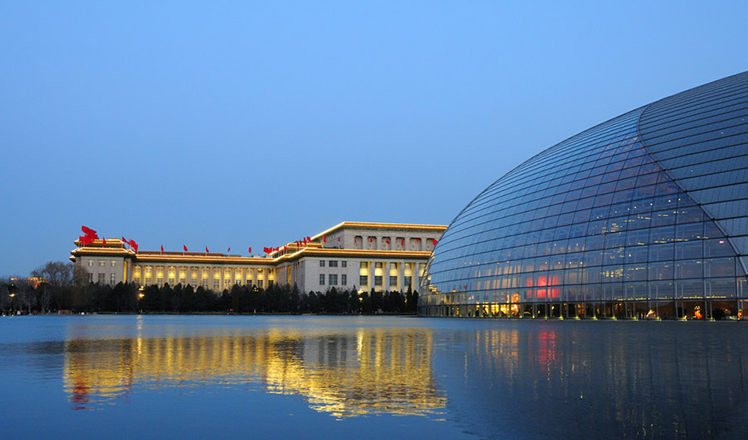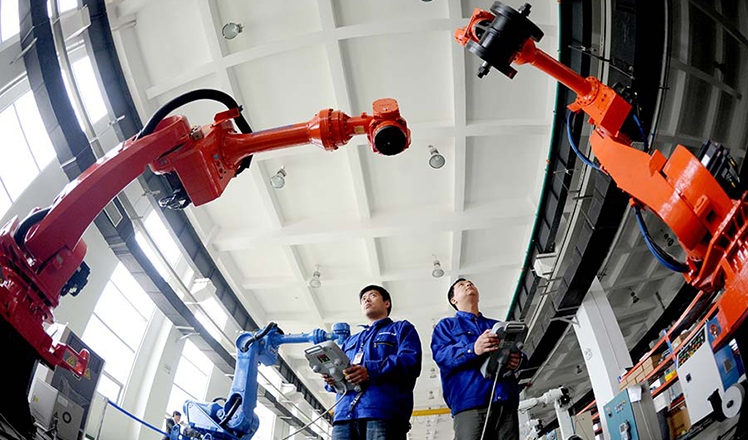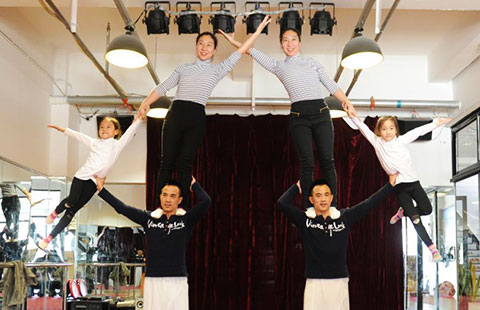Chinese buyers hesitant on art market
Updated: 2016-03-14 23:27
By AMY HE in New York(China Daily USA)
|
|||||||||
Art insiders say that Chinese buyers are more cautious about what pieces they’re collecting, which may affect sales during Asia Week in New York.
The buyers are pickier about what they buy, and lower sales figures from major auction houses like Sotheby’s and Christie’s may indicate a slower 2016 art year to come, they said.
Grace Rong Li, an art adviser, said she has seen preliminary signs that Chinese clients may be pulling back from their spending activity for the year.
“Normally at the beginning of the year I would get a list of the works to look for or to buy; this year I’m seeing a reduction in the list and the budgets,” she said.
“Since the beginning of this year, I can feel that for some of my clients who are very involved in the stock market — or if their companies are listed on the stock market — the impact [on their budget] has been more serious than it was last year,” she said.
The art market is “very much linked to the economy,” she said, even if market changes tend to occur after economic climates have already shifted.
Sales of Impressionist and other modern works at Sotheby’s and Christie’s were about 35 to 50 percent lower than they were during the same period last year, according to The New York Times.
Advisers who spoke to China Daily said they’ve noticed pullbacks in buying across the market, from the very high end to the middle and lower markets.
“There are big contemporary buyers [from China], and I think they buy a lot of Impressionist masterpieces, so I’d say those areas are particularly impacted,” said Annelien Bruins, COO and senior art adviser at Tang Art Advisory.
The changing Chinese economy drives down the prices of art, Bruins said. Chinese buyers also have been less active in the market, she said, “probably due to their own lack of confidence in the art market, or perhaps they just have less cash — if you’re not making money, then you’re probably not going to put it into art”.
Seeing this hesitation, dealers and auction houses are pulling back themselves because of a lack of guarantees that pieces will sell, she said.
“I think they have less guarantees (than) last year, and even with the guarantees that you see at [the higher-end market] levels, people just won’t put it on the block if they feel the art is not going to sell,” she said. “There’s probably an expectation from sellers that they may not get as much as they would have a year ago or so, which means that they won’t consign as much.”
James Lally, gallery owner of J.J. Lally & Co, told Bloomberg that he has seen a moderation of activity on the international market for Chinese art. “The buyers are not as euphoric as they were five years ago,” he said.
The slowdown has produced a more sophisticated buyer who is doing more research about pieces and doing less buying just because of brand names, said Megan Connolly, contemporary Asian art specialist.
“I think those days of just frenetic auction frenzy, where you have … people throwing down millions — that has definitely slowed down because as the collector becomes more sophisticated and exposes himself to not only art from China but art from around the world, the expectations from the Asian collector are higher,” she said.
“Whereas in the past, the mediocre Picassos and not the best art out there was falling into the hands of the Asian collectors, because they were buying based on art and the commodities of art as a brand, but now you see kind of the educated collector emerging,” she added.
amyhe@chinadailyusa.com- Germanwings crash caused deliberately by mentally ill copilot: BEA
- Second car bomb in a month kills 34 in Turkish capital, Ankara
- German voters batter Merkel over migrant policy
- Myanmar's ruling party secures 2 seats of presidential candidates
- 'Hearts in pieces' 5 years after tsunami hits Japan
- Kim Jong-un orders nuclear strike means to be ready

 The world in photos: March 7 - March 13
The world in photos: March 7 - March 13
 China's booming IT industry helps drones fly high
China's booming IT industry helps drones fly high
 This 'mermaid' left broadcasting for a watery world
This 'mermaid' left broadcasting for a watery world
 Snapshots at Two Sessions
Snapshots at Two Sessions
 Beijing sees blue sky during the two sessions
Beijing sees blue sky during the two sessions
 Fukushima five years on: Searching for loved ones
Fukushima five years on: Searching for loved ones
 Robots ready to offer a helping hand
Robots ready to offer a helping hand
 China to bulid another polar ship after Xuelong
China to bulid another polar ship after Xuelong
Most Viewed
Editor's Picks

|

|

|

|

|

|
Today's Top News
What ends Jeb Bush's White House hopes
Investigation for Nicolas's campaign
Will US-ASEAN meeting be good for region?
Accentuate the positive in Sino-US relations
Dangerous games on peninsula will have no winner
National Art Museum showing 400 puppets in new exhibition
Finest Chinese porcelains expected to fetch over $28 million
Monkey portraits by Chinese ink painting masters
US Weekly

|

|








